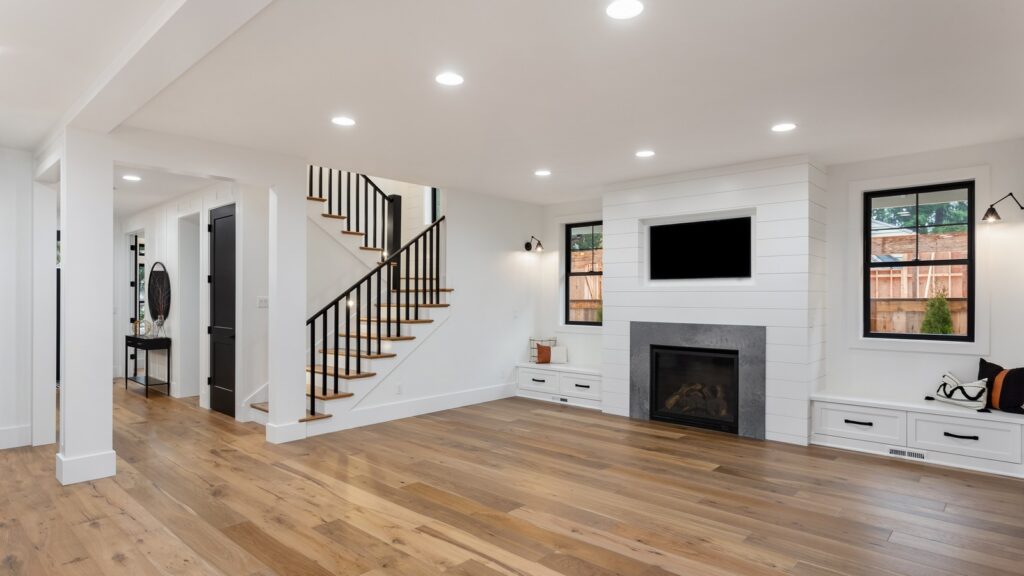How Many Recessed Lights Do I Need? A Comprehensive Guide
Recessed lighting has become a popular choice for modern homes due to its sleek appearance and ability to provide effective illumination. However, determining how many recessed lights you need can be a challenging task. This guide will explore the factors that influence the number of recessed lights required for a space, provide a step-by-step process for calculating your needs, and offer tips for installation and design.
Understanding Recessed Lighting
Recessed lighting, often referred to as “can lights” or “pot lights,” involves fixtures that are installed into the ceiling, creating a clean and streamlined look. These lights can serve various purposes, including general lighting, task lighting, and accent lighting.
Benefits of Recessed Lighting
- Aesthetic Appeal: Recessed lights provide a modern and unobtrusive lighting solution that enhances the overall design of a room.
- Versatility: They can be used in various settings, including living rooms, kitchens, bathrooms, and hallways.
- Space-Saving: Since they are installed in the ceiling, recessed lights do not take up valuable floor or table space.
- Adjustable Lighting: Many recessed lights can be angled or dimmed, allowing for customized lighting solutions.
Factors to Consider When Calculating the Number of Recessed Lights
To determine how many recessed lights you need, consider the following factors:
1. Room Size
The size of the room is one of the most critical factors in determining the number of recessed lights needed. Larger rooms will require more lights to ensure adequate illumination.
2. Ceiling Height
The height of the ceiling can affect the distribution of light. Higher ceilings may require more lights or fixtures with higher wattage to achieve the desired brightness.
3. Purpose of Lighting
Consider the purpose of the recessed lighting. General lighting requires a different number of fixtures than task or accent lighting. For example, a kitchen may need more lights for cooking tasks, while a living room may require fewer for general ambiance.
4. Light Output
The brightness of recessed lights is measured in lumens. Higher lumen output means more light. It’s essential to choose the right wattage and type of bulb for your needs.
5. Layout and Design
The layout of the room and the placement of furniture will influence how many recessed lights you need. Consider the areas that require more light, such as workspaces or reading nooks.
Calculating the Number of Recessed Lights
A general rule of thumb for calculating the number of recessed lights needed is to use the following formula:
- Determine the Total Square Footage: Measure the length and width of the room and multiply to find the total square footage.
- Calculate the Total Lumens Needed: Multiply the square footage by the recommended lumens per square foot based on the room’s purpose. Here are some general guidelines:
| Room Type | Lumens per Square Foot |
|---|---|
| Living Room | 10-20 |
| Kitchen | 30-40 |
| Bathroom | 30-40 |
| Bedroom | 10-20 |
| Hallway | 5-10 |
- Determine the Lumen Output of Your Fixtures: Check the packaging of your recessed lights to find the lumen output for each bulb.
- Calculate the Number of Fixtures Needed: Divide the total lumens needed by the lumen output of the recessed lights. This will give you the number of fixtures required.
Example Calculation
For a living room that is 15 feet by 20 feet:
- Total Square Footage: 15 x 20 = 300 sq. ft.
- Total Lumens Needed: 300 sq. ft. x 15 lumens (average for living room) = 4,500 lumens.
- Lumen Output of Fixtures: If each recessed light provides 800 lumens, divide the total lumens needed by the lumen output of each fixture:
4500 lumens800 lumens fixture=5.625 fixtures
Round up to 6 fixtures.
Placement of Recessed Lights
Once you have determined how many recessed lights you need, the next step is to plan their placement. Here are some tips for effective placement:
- Spacing: A common guideline is to space recessed lights 6 to 8 feet apart. This can vary based on the height of the ceiling and the wattage of the bulbs.
- Distance from Walls: Recessed lights should be placed approximately 2 to 3 feet from the walls to avoid harsh shadows.
- Consider Task Areas: Place additional lights over work areas, such as kitchen counters, desks, or reading nooks.
- Create Layers: Use a combination of recessed lights and other lighting sources to create a layered lighting effect.
Installation of Recessed Lights
Installing recessed lights can be a DIY project for those comfortable with electrical work. Here’s a general overview of the installation process:
Tools and Materials Needed
| Tool/Material | Purpose |
|---|---|
| Recessed light fixtures | The main lighting source |
| Electrical wire | To connect the fixtures to the power source |
| Wire connectors | To secure electrical connections |
| Drill and hole saw | For cutting holes in the ceiling |
| Voltage tester | To ensure the power is off |
| Ladder | For reaching high ceilings |
| Safety goggles and gloves | For protection during installation |
Installation Steps
- Turn Off Power: Ensure the power is turned off at the circuit breaker.
- Mark the Placement: Use a pencil to mark where the lights will be installed.
- Cut Holes: Use a hole saw to cut holes in the ceiling based on the size of the recessed fixtures.
- Run Electrical Wiring: If you are adding new fixtures, run electrical wire from the power source to each fixture location.
- Connect Wires: Use wire connectors to connect the fixture wires to the electrical supply.
- Install Fixtures: Insert the recessed light fixtures into the holes and secure them according to the manufacturer’s instructions.
- Restore Power and Test: Turn the power back on and test the lights to ensure they are functioning correctly.
Maintenance of Recessed Lights
To keep your recessed lights in good condition, consider the following maintenance tips:
- Regular Cleaning: Dust and clean the fixtures regularly to maintain brightness and appearance.
- Check Bulbs: Replace any burnt-out bulbs promptly to ensure consistent lighting.
- Inspect Wiring: Periodically check the wiring for any signs of wear or damage.
Frequently Asked Questions (FAQs)
- How many recessed lights do I need for a 12×12 room?
For a 12×12 room (144 sq. ft.), you would need approximately 1,440 lumens. If each light provides 800 lumens, you would need about 2 fixtures. - Can I install recessed lights in a room with low ceilings?
Yes, but you may want to use low-profile fixtures to avoid making the ceiling feel even lower. - What type of recessed lights are best for kitchens?
For kitchens, consider using adjustable or gimbal recessed lights to direct light where it’s needed most. - Are recessed lights energy-efficient?
Yes, using LED bulbs in recessed fixtures can significantly reduce energy consumption compared to traditional incandescent bulbs. - Do I need a dimmer switch for recessed lights?
A dimmer switch is not necessary, but it can enhance the versatility of your lighting and create different ambiances. - How far apart should I space recessed lights?
A good rule of thumb is to space them 6 to 8 feet apart, depending on the height of the ceiling. - Can I use recessed lights in a bathroom?
Yes, but ensure that the fixtures are rated for wet or damp locations, especially if they are near showers or bathtubs. - What is the best wattage for recessed lights?
The best wattage depends on the room size and purpose; typically, 10-20 watts for general lighting and 30-40 watts for task lighting in kitchens. - How do I choose the right trim for recessed lights?
Choose trim based on the desired light distribution and aesthetic; options include baffle, reflector, and adjustable trims. - Is it safe to install recessed lights myself?
If you are comfortable with electrical work and follow safety guidelines, you can install recessed lights yourself. Otherwise, consider hiring a professional.
Conclusion
Determining how many recessed lights you need requires careful consideration of various factors, including room size, purpose, and layout. By following the guidelines outlined in this article, you can effectively calculate and install recessed lighting that enhances your home’s ambiance and functionality.
Additional Resources
For more information on recessed lighting and its installation, you can visit the following link:
This comprehensive guide provides all the necessary information to help you understand and implement recessed lighting in your home.



